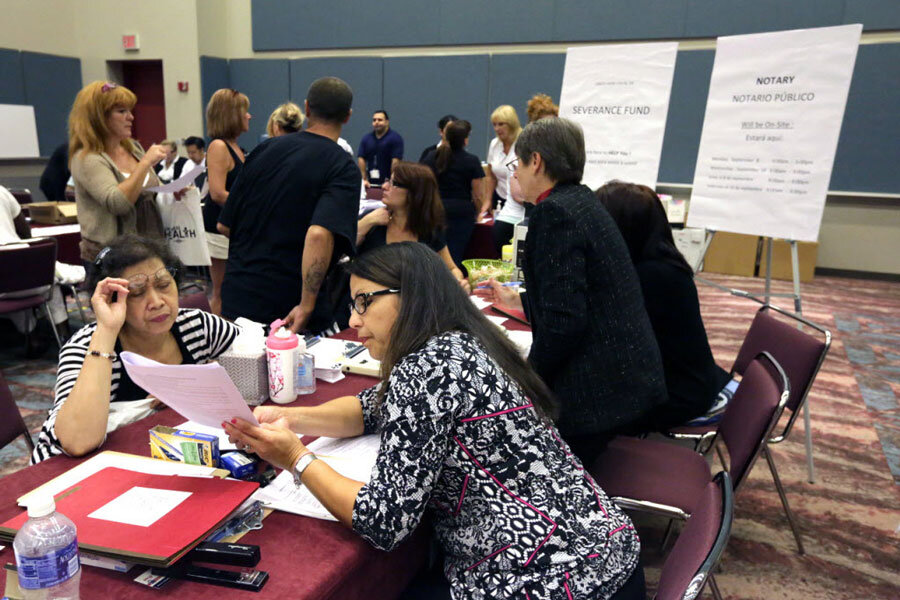US jobless claims below 300,000: How good is job market getting?
| Washington
Some 293,000 people filed claims for unemployment benefits in the past week – a lower-than-expected number and one that puts this indicator firmly back to levels last seen before the Great Recession.
Does that Labor Department news mean all is back to normal with the US job market?
Far from it. But it is another tangible sign of improvements in the economy that are reducing the number of unemployed, helping more workers shift from part-time to full-time, and brightening hopes for pay raises in some quarters.
The number of weekly claims for jobless benefits is typically well above 250,000 even in the best of times, because of the “churn” or job turnover that’s typical in a large economy with more than 100 million workers.
Since the recession, though, jobless claims averaged well above 350,000 for several years into the economy’s recovery.
Only this year has the number – when tracked as a four-week average to smooth out the statistical “noise” – started to fall toward 300,000. Now, finally, we’re seeing numbers that echo conditions in years like 2006 or 1999.
The official unemployment rate has fallen close to 6 percent – again not far from what many economists call its “natural” rate.
In a late August poll by the Pew Research Center, 33 percent of Americans saw plenty of jobs available where they live, up six points since April and well above the low of 10 percent reached in the spring of 2010.
Still, 58 percent in the poll said jobs are difficult to find.
So, again, it’s hard to call the jobs recovery anywhere near complete.
Consider that the number of Americans who are “long-term unemployed” is still nearly 3 million people – way outside the norm for this stage in an economic expansion. These are people who have been out of work and looking for jobs for at least half a year.
The number of long-term unemployed, although way down from a 2010 peak of 6.8 million, remains well above any level seen in a recession or post-recession going back to 1948. And this is five years after the Great Recession’s official end in June 2009.
Meanwhile, wages remain relatively stagnant against inflation, and economists estimate that many would-be workers remain on the sidelines – not counted as unemployed because they still don’t see the outlook as promising enough to engage in the job hunt.
“Although we have made great strides, a good deal of slack remains in the labor market,” Charles Evans, president of the Federal Reserve Bank of Chicago, said in a Washington speech on Wednesday.
Policymakers at the Federal Reserve are thinking hard about how to use monetary policy (keeping interest rates low) to encourage the fullest possible improvement in jobs and wages without rekindling inflation or encouraging damaging financial behavior such as a stock market bubble.
What more could be done? Some economists say steps such as streamlining the tax code, pruning unneeded regulations would help attract business investment in the US.
Others urge stepped up government spending on infrastructure projects – which could have long-run payoffs for the economy even while boosting short-term job creation. Some forecasters also say that comprehensive immigration reform would help the whole economy grow faster – even as it improves jobs and wages for immigrants.









